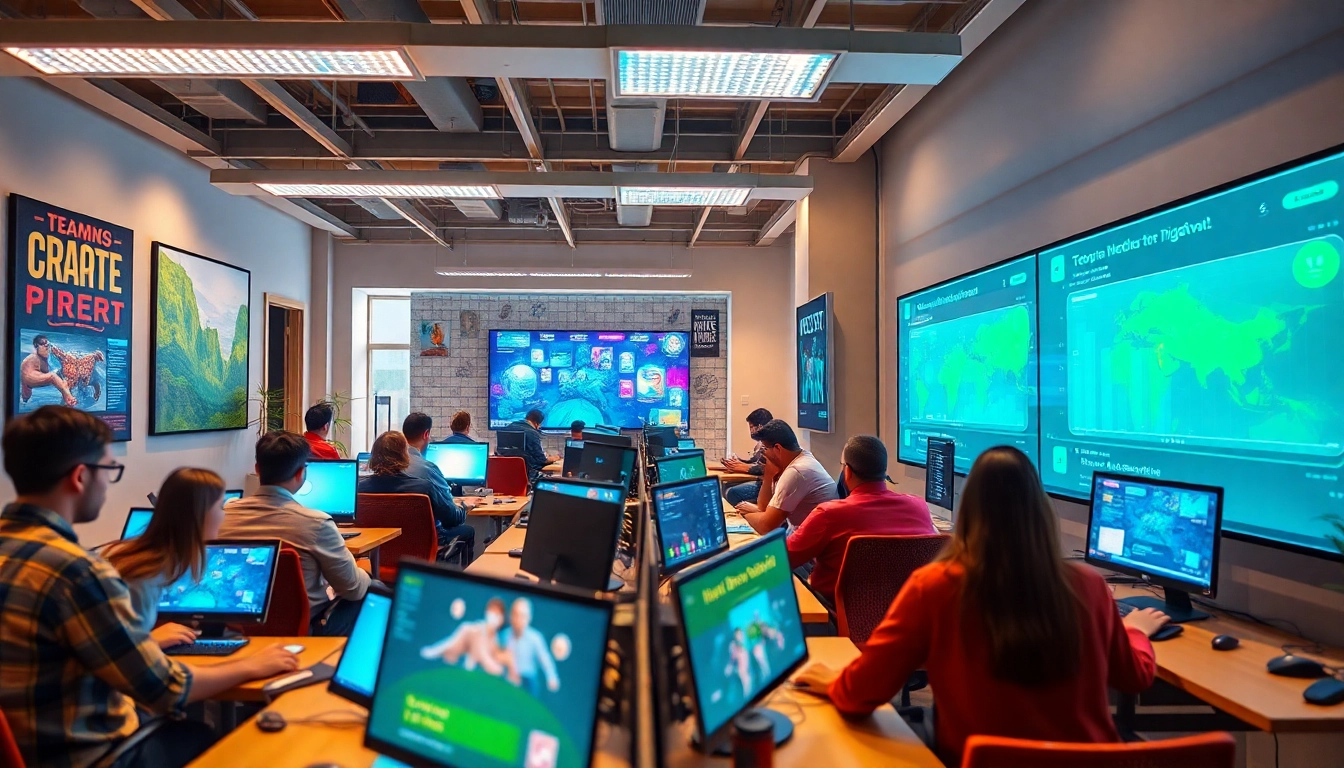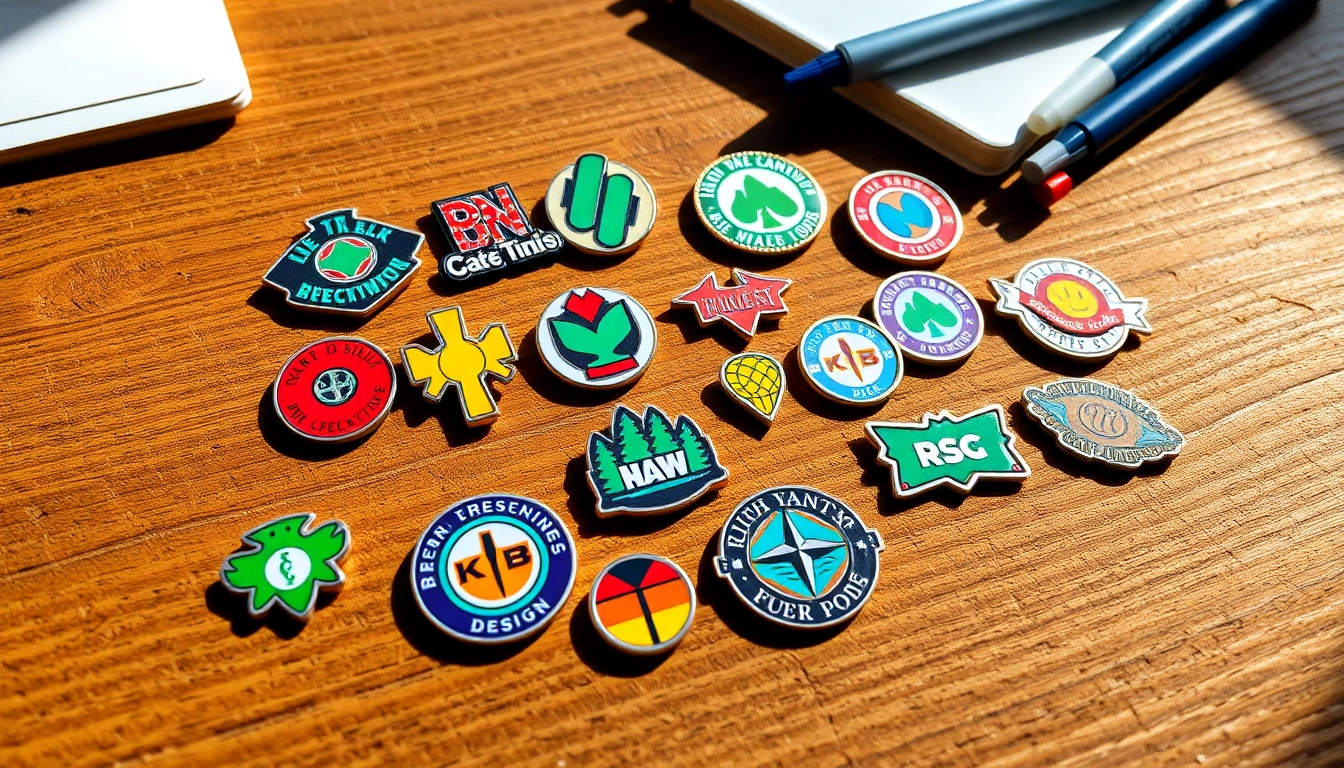Understanding Gamification: Basics and Benefits
What is Gamification?
Gamification refers to the application of game-like elements in non-gaming contexts to enhance user engagement and motivation. By incorporating aspects such as point scoring, leaderboards, and competitions into different environments—such as corporate training, marketing, and customer loyalty programs—businesses can make mundane or complex tasks more enjoyable and rewarding. The idea behind gamification is to tap into innate human desires for competition, achievement, and social interaction, thus enhancing user experience and promoting desired behaviors.
Why Businesses Use Gamification Companies
In today’s competitive landscape, many businesses turn to gamification companies to enhance their engagement strategies. Companies engage these firms to merge technology with creativity, leading to innovative solutions that can increase motivation and productivity. For instance, gamification can help in areas like employee training, where it transforms traditional learning into interactive modules that are engaging and fun. Additionally, businesses leverage gamification to cultivate loyalty among consumers by embedding game mechanics into their reward programs, thus encouraging repeat purchases and user interaction.
Key Benefits of Gamification Solutions
- Increased Engagement: Gamification transforms routine tasks into engaging experiences, raising participation levels significantly.
- Higher Retention Rates: Incorporating elements of competition and achievement keeps employees and customers invested over time.
- Improved Focus: Game mechanics enhance concentration on tasks, leading to better performance and learning outcomes during training sessions.
- Data-Driven Insights: Gamification platforms often come with analytics that allow businesses to track user interactions and performance metrics in real time, helping refine strategies.
- Enhanced Collaboration: Skills such as teamwork and camaraderie can be nurtured through competitive and cooperative gameplay elements.
Top Gamification Companies to Explore in 2025
Leading Gamification Companies Overview
Several companies have emerged as leaders in the space, providing robust platforms that businesses can utilize to implement gamification strategies effectively. Below are some of the top contenders to watch in 2025:
- Centric: Known for its comprehensive gamification solutions that focus on employee engagement and performance enhancement.
- Spinify: Focusing on sales teams, Spinify uses gamification techniques to drive sales performance and productivity.
- Influitive: This platform specializes in customer advocacy, leveraging gamification to boost customer engagement and loyalty.
- Qualifio: Offers interactive content solutions that can be gamified to enhance customer interaction and engagement significantly.
- Bunchball Nitro: One of the pioneers in gamification, providing systems that leverage game mechanics for social engagement.
Innovative Startups in Gamification
The field of gamification is ever-evolving, with new startups introducing innovative ideas and methods. Here are some emergent companies worth noting:
- MindTickle: Focused on sales enablement, MindTickle enables organizations to onboard teams through engaging, gamified experiences.
- Drimify: This startup is revolutionizing eLearning with gamified content that makes learning more enjoyable and effective.
- LevelsPro: Aimed at wellness and health sectors, LevelsPro incentivizes healthy behavior through gamification.
Comparative Analysis of Popular Platforms
When comparing gamification platforms, it’s essential to consider their unique features, advantages, and ideal use cases. For example, while Centrical is exceptional for corporate training, Influitive excels in customer engagement. A comparative analysis can help potential users identify which platform aligns best with their needs.
| Company | Key Features | Best For |
|---|---|---|
| Centric | Employee performance tracking, real-time feedback | Corporate training |
| Spinify | Leaderboards, motivational notifications | Sales teams |
| Influitive | Customer advocacy tools, rewards | Customer loyalty |
| Qualifio | Content gamification, interactive experiences | Marketing engagements |
| Bunchball Nitro | Social gaming elements, performance analysis | Employee engagement |
Success Stories: Gamification in Action
Case Studies of Gamification Companies
The success of gamification can best be illustrated through impactful case studies. Notably, Starbucks has effectively utilized gamification in their rewards program, turning mundane transactions into engaging activities by rewarding customers with stars for purchases, which they can subsequently use for free drinks or exclusive offers. This initiative has not only boosted customer loyalty but also significantly increased sales.
Impact on User Engagement and Loyalty
Companies employing gamification can witness substantial improvements in user engagement and loyalty. For instance, Duolingo, a language-learning app, has successfully utilized gamified elements like points, levels, and streak rewards to create a fun learning environment, which in turn increases retention and engagement rates significantly.
Examples from Different Industries
Different industries utilize gamification in various ways. For example, in healthcare, platforms like Welltory use gamified apps to encourage users to track their health and fitness, fostering a mindful approach to personal well-being. Meanwhile, in education, platforms like Kahoot! turn quizzes into competitive games, enhancing learning retention while engaging students in a fun way.
Implementing Gamification: Steps and Strategies
How to Choose the Right Gamification Company
Selecting the appropriate gamification platform is vital to success. Businesses should evaluate their specific needs, such as whether they require a solution for customer engagement or employee training. Additionally, considerations should include user-friendliness, customization capabilities, integration with existing systems, and the overall cost versus expected ROI.
Steps to Integrate Gamification into Your Business
- Define Objectives: Clearly outline what you wish to achieve with gamification (e.g., increased sales, improved employee training).
- Select Appropriate Mechanics: Choose which game elements (points, badges, leaderboards) would be most effective.
- Pilot the Program: Start with a smaller group to test the gamified experience and gather feedback.
- Evaluate Performance: Monitor key performance indicators to assess the impact of gamification on engagement and outcomes.
- Iterate based on Feedback: Use insights gained from pilot assessments to refine and improve the gamification strategy.
Measuring Success: Metrics for Gamification
Understanding the effectiveness of your gamification strategy is crucial. Common metrics that businesses could utilize include:
- Engagement Rate: The percentage of users actively participating in the gamified experience.
- Retention Rate: How well the gamification retains users over time.
- Conversion Rate: In marketing, the percentage of users completing desired actions (like sign-ups or purchases).
- Customer Satisfaction Scores: A measure of overall customer satisfaction post-gamification rollout.
Future of Gamification: Trends and Predictions
Emerging Technologies in Gamification
As technology advances, so too does the potential for gamification. Artificial intelligence, augmented reality, and virtual reality are beginning to intertwine with gamification strategies, making experiences more immersive and interactive. Imagine a retail store where customers use an app to navigate through gamified quests, unlocking discounts or offers as they explore. Such innovations are likely to reshape how businesses think about customer engagement.
What to Expect in the Gamification Industry by 2025
By 2025, it is anticipated that the gamification industry will witness exponential growth. With more businesses recognizing the tangible benefits of gamification, including higher retention and productivity levels, industry adoption is expected to surge. Additionally, tools and analytics will become more sophisticated, offering businesses deeper insights into user behavior.
Preparing for Changes in Consumer Behavior
With evolving consumer preferences toward more engaging and interactive experiences, businesses must adapt their gamification strategies accordingly. Focusing on personalization will be key. Understanding and catering to the individual preferences of users through tailored gamification experiences will foster deeper connections and long-term loyalty.


